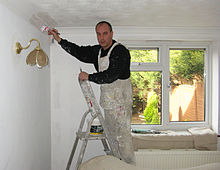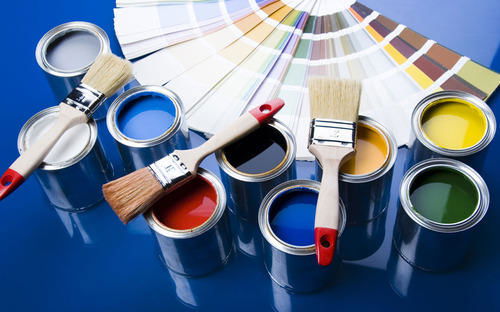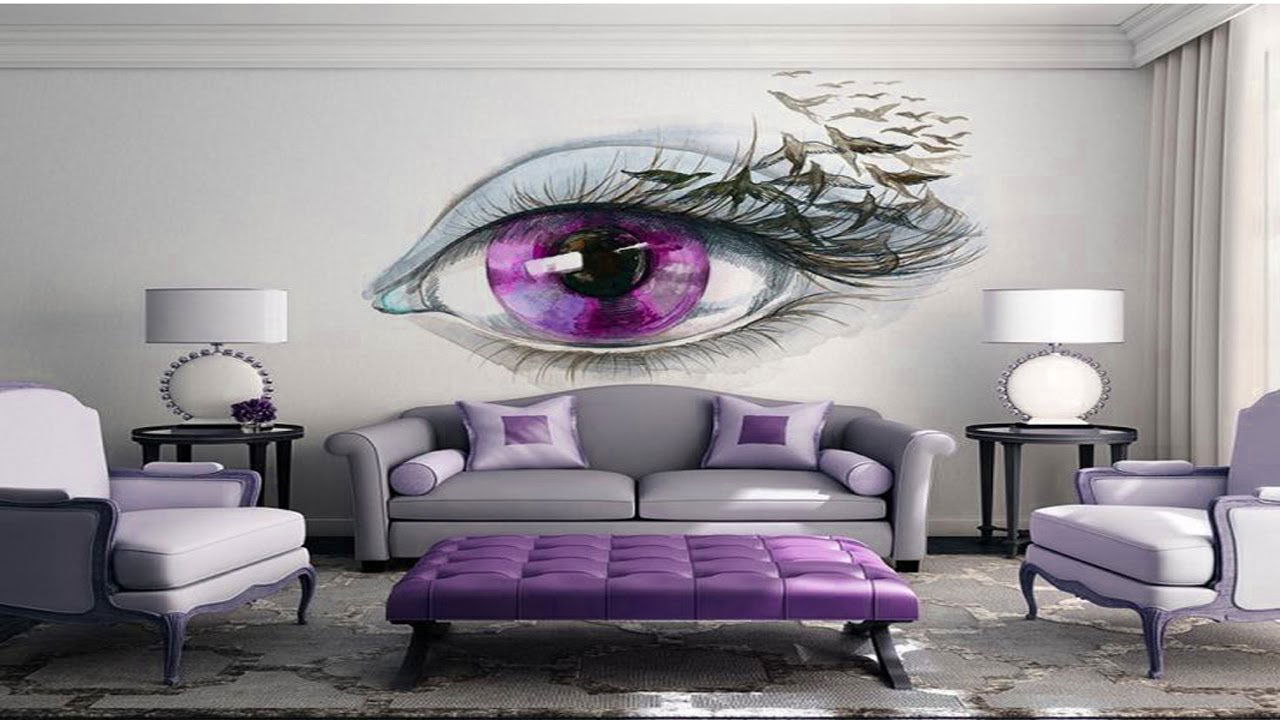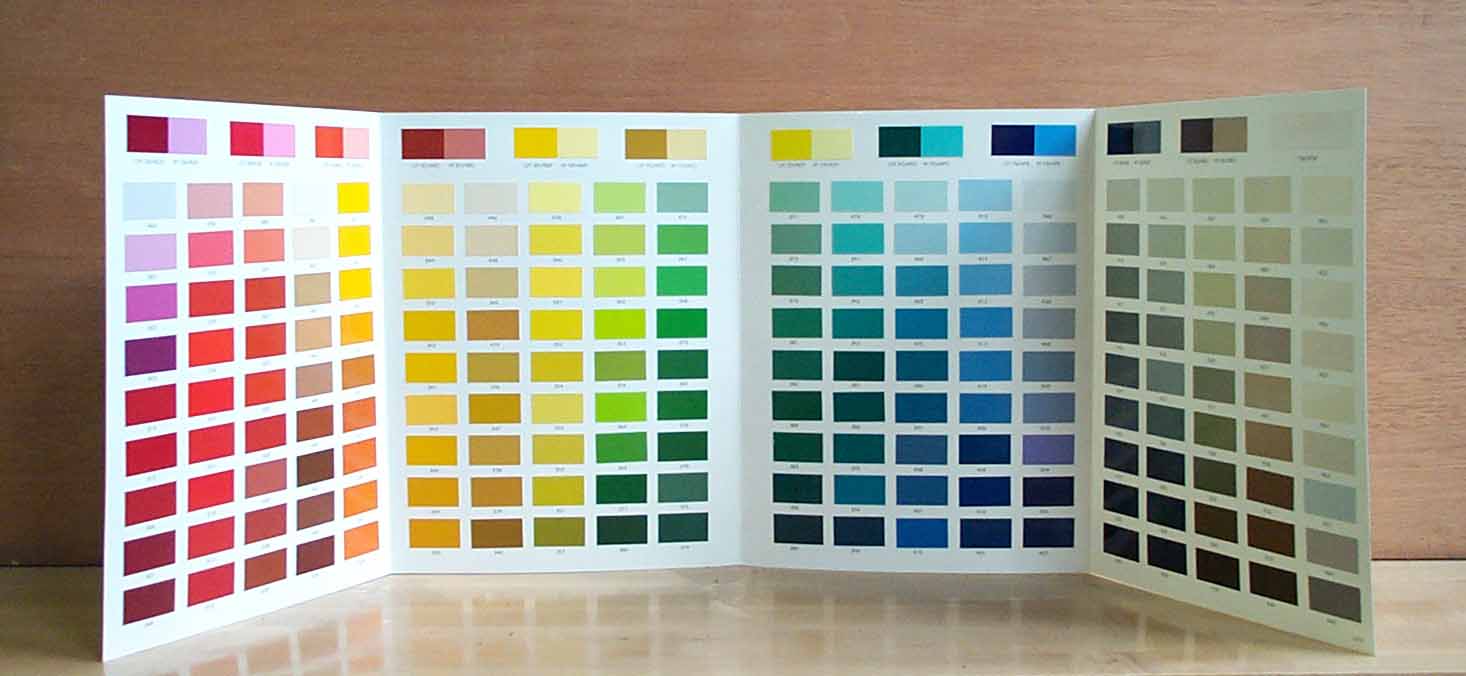In England, little is known of the trade and its structures before the late 13th century, at which paint guilds began to form, amongst them the Painters Company and the Stainers Company. These two guilds eventually merged with the consent of the Lord Mayor of the City of London in 1502, forming the Worshipful Company of Painter-Stainers. The guild standardised the craft and acted as a protector of the trade secrets. In 1599, the guild asked Parliament for protection, which was eventually granted in a bill of 1606, which granted the trade protection from outside competition such as plasterers.[2]
The Act legislated for a seven-year apprenticeship, and also barred plasterers from painting, unless apprenticed to a painter, with the penalty for such painting being a fine of £5. The Act also enshrined a maximum daily fee of 16 old pence for their labour.[2]

A paint masterThe Paint MasterEnforcement of this Act by the Painter-Stainers Company was sought up until the early 19th century, with master painters gathering irregularly to decide the fees that a journeyman could charge, and also instigating an early version of a job centre in 1769, advertising in the London newspapers a "house of call" system to advertise for journeymen and also for journeymen to advertise for work. The guild's power in setting the fee a journeyman could charge was eventually overturned by law in 1827, and the period after this saw the guild's power diminish, along with that of the other guilds; the guilds were superseded by trade unions, with the Operative United Painters' Union forming sometime around 1831.[2]In 1894, a national association formed, recreating itself in 1918 as the National Federation of Master Painters and Decorators of England and Wales, then changing its name once again to the British Decorators Association before merging, in 2002, with the Painting & Decorating Federation to form the Painting & Decorating Association. The Construction Industry Joint Council, a body formed of both unions and business organizations, today has responsibility for the setting of pay levels.[2]
Activities of the trade[edit]
Historically, the painter was responsible for the mixing of the paint; keeping a ready supply of pigments, oils, thinners and driers. The painter would use his experience to determine a suitable mixture depending on the nature of the job. In modern times, the painter is primarily responsible for preparation of the surface to be painted, such as patching holes in drywall, using masking tape and other protection on surfaces not to be painted, applying the paint and then cleaning up.[2]
Larger firms operating within the trade were generally capable of performing many painting or decoration services, from creating an accent wall to sign writing, to the gilding of objects or the finishing or refinishing of furniture.[2]
More recently, professional painters are responsible for all preparation prior to painting. All scraping, sanding, wallpaper removal, caulking, drywall or wood repair, patching, stain removal, filling nail holes or any defects with plaster or putty, cleaning, taping, preparation and priming are considered to be done by the professional contracted painter.
See also[edit]
- Accent wall
- Adhesion testing
- Coating
- Painterwork
- Painting and Decorating Contractors of America
- Volatile organic compounds
- Painterwork accomplishes two things, namely the preservation and the coloration of the material which is painted. The compounds used for painting, taking the word as meaning a thin protective and/or decorative coat, are very numerous, including oil paint of many kinds, distemper, whitewash, tar; but the word paint is usually confined to a mixture of oil and pigment, ground together in a process that thoroughly coats every small particle of pigment in oil, together with other materials which possess properties necessary to enable the paint to dry hard and with a degree of flexibility and to varying degrees of opacity/translucency. Oil paints are made up of four parts, the base, the vehicle, the solvent and the driers. Pigment may be added to these to obtain a paint of any desired color. There are several bases for oil paint, those most commonly used for building work being white lead, red lead, zinc white and iron oxide.
Contents- 1Base layer
- 2Graining
- 3Marbling
- 4Painting on plaster work
- 5Painting on iron
- 6Blistering and cracking
- 7Distemper
- 8Gilding, et cetera
- 9See also
- 10References
- Base layer[edit]
White lead is a base for paint. It is poisonous, and is used with care, when used at all. When pure it consists of about 75% lead carbonate and about 25% of lead hydrate. It is mixed with 6 or 7% by weight of pure linseed oil, and in this form is supplied to the painter. Barium sulfate is the chief adulterant used in the manufacture of white lead. White lead has greater covering properties and is more durable than the other bases. Paints having white lead for a base darken with age, and become discolored when exposed to hydrogen sulfide, which exists to a greater or lesser extent in the air of all large towns.
Zinc white, zinc oxide, is of a purer white color than white lead. It is lighter, but does not possess the same durability or covering power. It is, however, useful in internal decoration, as it retains its color well, even when subjected to the action of gases. Red lead is a lead oxide. It is used chiefly in the priming coat and as a base for some red paints. Like white lead, it is injured if exposed to acids or impure air, which cause discoloration and decay.
Oxide of iron is used chiefly as a base in paints used for covering ironwork, the theory being that no destructive galvanic action can be set up, as might be the case with lead paint when used on iron. A variety of red pigments are made from oxide of iron, varying in hue from a pale to a deep brownish-red. They are quite permanent, and may be used under any conditions. The vehicle is a liquid in which the particles of the base are held in suspension, enabling a thin coat of paint to be formed, uniform in color and consistency, and which on drying forms a kind of skin over the surface to which it is applied. For oil paint the vehicles used are oils; for distemper water is employed. The oils used as vehicles are chiefly linseed oil, raw and boiled, and poppy-seed oil. Nut oils are occasionally used for inferior work because they are much cheaper. Linseed oil, the one most commonly used, is obtained from the seeds of flax by warming it and squeezing out the oil under hydraulic pressure. The resultant, which is of a transparent amber color, is known as "raw oil". It is used principally in interiors for light, bright colors, drying somewhat slowly and giving a firm elastic coat. The oil improves by keeping, and is sometimes refined with acids or alkalis.
Boiled oil is the raw oil heated with driers, such as litharge or red lead, to a temperature from 350° to 500 °F, at which it is maintained for three or four hours. It is thick and much darker in color than the raw oil, drying much more quickly, with a coat hard and glossy but less elastic than that produced by raw oil. Poppy-seed oil is expressed from the seeds of the poppy plant. It does not possess the tenacity and quick-drying powers of boiled linseed oil, but being of a very light color it is used for delicate colors. Turpentine is used as a solvent, diluent, or thinner, to bring the paint to a proper consistency so as to allow it to be spread in a thin even coat. When a flat dull surface is desired, turpentine alone is used with the base and the oil is omitted. The best turpentine comes from the pine forests of America. French turpentine is next in quality. Russian turpentine is the cheapest, and has usually a strong and unpleasant odor that renders it objectionable to work with. In consequence of the high price of turpentine of good quality, and the increasing difficulty of obtaining it, substitutes are coming into general use. Driers are substances usually added to paint to hasten the process of oxidation, i.e. the drying, of the oil. Some pigments possess this quality, as red lead and white lead.
The most notable driers are litharge, sugar of lead, patent driers, sulfate of zinc and manganese dioxide. Liquid driers, such as terebene, are also in use. Litharge, an oxide of lead, is in most general use. Sugar of lead is used, ground in oil, for light tints. Sulfate of zinc and manganese driers are used for paints in which zinc white is the base, which would be injured by lead driers. Pigments are preparations of metallic, earthy or animal origin mixed into paint to give it color. For oil paint they are usually ground in oil; for distemper they are sold as a finely ground powder. The ordinary pigments are white lead, zinc white, umbers, siennas, ochres, chromes, Venetian red, Indian red, lampblack, bone black, vegetable black, ultramarine, Prussian blue, vermilion, red lead, oxide of iron, lakes and Vandyke brown. The term enamel paint was first given to a compound of zinc white, petrol and resin, which possessed on drying a hard glossy surface. The name is now applied to any colored paint of this nature. Quick-drying enamels are spirit varnishes ground with the desired pigment. For slow-drying enamels oil varnishes form the vehicle.
Woodwork is often treated with a thin transparent-colored liquid that changes the color of the work without hiding the grain of the wood, and if the latter is good a very fine result is obtained. Sometimes the stain is produced by the combination of two or more chemicals applied separately, or soluble pigments may be mixed with a transparent vehicle and applied in the usual way. The vehicles for the pigments vary considerably, and include water, methylated spirit, size, turpentine and clear raw linseed oil. Varnish is made by dissolving certain gums in linseed oil, turpentine, spirit or water. They give a transparent protective coat to painted and stained surfaces or to wallpaper or plain woodwork. Varnishes usually dry with a very smooth, hard and shiny surface, but flat or dead surfaces that are without gloss may be obtained with special varnish. The gums used for hardwearing or carriage varnishes, such as those to be exposed to the weather and frequently cleaned and polished, are amber, copal and gum anime. Amber is a yellow transparent or clouded gum found on the coasts of the Baltic, and particularly in Prussia. It makes a hard, durable and slow-drying varnish that does not darken with age. Copal gum is brought from the West India Islands and also from the East Indies. It makes the most durable varnish, and being tough and hard is generally used for external work. Gum anime, is a variety of copal found in the sandy soil of the East Indies.
It is hard, durable and quick drying, but unless the varnish is carefully made it is liable to crack. Varnishes for inside work, or cabinet varnishes, are made with a variety of resins dissolved in linseed oil and turpentine. The resultant gives a hard, lustrous surface, somewhat less durable than that of carriage varnishes. Turpentine varnishes are made from soft gums, such as dammar, common resin and mastic; they are light in color, cheap and not very durable. Lacquers or spirit varnishes are made from very soft gums, such as shellac and sandarach, dissolved in methylated spirit. They are used for internal work, drying quickly, and becoming hard and very brilliant. Surfaces formed with such varnishes are liable to chip easily and scale off. Oil paint is very much improved by the addition of some varnish; it causes it to dry harder and more quickly and with a fine lustrous surface. The driers used for varnish are generally acetate of lead or litharge. An excess of driers makes the varnish less durable and causes cracking. There are many kinds of French polishes, mixed in different ways, but most are composed of shellac and sandarach dissolved in spirit. It is applied to the perfectly smooth surface of hard woods with a pad of flannel or wadding wrapped in linen, and well rubbed in with a circular motion.
A dull polish is procured by rubbing beeswax into the wood. It must be thoroughly rubbed in, a little turpentine being added as a lubricant when the rubber works stiffly. If paint were applied over the bare knots of new wood it would be destroyed, or at least discolored, by the exudation of resin from the knots. For the purpose of obviating this the knots are covered with two coats of a preparation called knotting, made by dissolving shellac in methylated spirit. Putty is required for stopping nail-holes and small crevices and irregularities in woodwork. It is made of powdered whiting and linseed oil mixed together and kneaded into a stiff paste. For light work hard stopping, made of white lead and whiting, should be employed. The tools and appliances of the painter are mixing pots, paint kettles to hold the color for the painter at work, strainer, palette knife, scraping knife, hacking, stopping and chisel knives, the hammer, sponge, pumice, blow-lamp for burning off, and a variety of brushes, such as the duster, the ground brush, the tool, the distemper brush, the fitch and camel-hair pencil for picking out small parts and lines, the sable and flogger for gilding, the stippler; for grained work several steel graining combs with coarse and fine teeth, graining brush of hogs' hair, pencil over-grainer, and other special shaped brushes used to obtain the peculiar characteristics of different woods. It is absolutely necessary for good work to use brushes of a fine quality, and although expensive at first cost, they are undoubtedly cheapest in wear.
New woodwork requires to be knotted, primed, stopped, and in addition painted with three or four coats of oil color. The priming coat is a thin coat of white lead, red lead and driers mixed with linseed oil and turpentine. Work should always be primed before the stopping is done.
The second or lead coat is composed mainly of turpentine, linseed oil and white lead. The third coat is the ground for the finishing color, and is made of white lead and linseed oil and turpentine, with enough pigment to bring it to a tint approaching the finishing color. The remaining coat or coats is of similar composition. A flatting coat is made of white lead and turpentine with the desired pigment. One pound of color will cover 4 square yards in the first coat and 6 square yards in the additional coat.
Graining[edit]
Graining is understood among painters to be a faux finish imitating several different species of ornamental woods, as satinwood, rosewood, mahogany, oak and others. After the necessary coats of paint have been put on to the wood a ground is then laid of the required tint and left to dry. The painter then prepares small quantities of the same color with a little brown, and boiled oil and turpentine, and, having mixed this, spreads it over some small part of his work. The flat hogs' hairbrushes being dipped in the liquid and drawn down the newly laid color, the shades and grainings are produced. To obtain the mottled appearance the camels' hair pencils are applied, and when completed the work is left to dry, and after-wards covered by a coat or two of good copal varnish. Imitation wainscot requires the use of combs of various degrees of fineness to obtain the grain (whence the process is called combing by some persons), and the flower is got by wiping off the color with a piece of rag. When dry it is over-grained to obtain a more complete representation of the natural wood, and then varnished.
If the work is done in watercolor and not in oil, beer grounds to act as a drier are mixed with the color; this sets it ready for varnishing. A patent graining machine, a sort of roller with a pattern upon it, is often used.
Marbling[edit]
Main article: MarbleizingMarbling is a faux finish imitating real marbles and granites, some of which are represented by splashing on the carefully prepared ground, which should have been painted and often rubbed and polished to obtain an even surface; others have to be painted in colors, and then well varnished.
Painting on plaster work[edit]
Plastering should never be painted until it is thoroughly dry. Portland cement is best left for a year or two before being painted. Plasterwork not previously painted will require four or five coats, Portland cement five or six. If plastered work is required to be painted immediately, it should be executed in Keene's or Parian cement. A great deal more paint is of course absorbed by plaster than by wood, just as wood absorbs more than iron.
Painting on iron[edit]
Iron and steel work should receive a coat of oxide paint at the manufacturer's works; additional coats are added after erection. All rust should be previously removed by means of wire brushes and paraffin or turpentine. The best paints for external ironwork are composed of oxide of iron and red lead, mixed with linseed oil. The following is an extract from the building by-laws of the municipality of Johannesburg: All structural metal work shall be thoroughly cleaned from scale and rust before painting.
Faying surfaces in riveted work shall be painted before putting them together. All surfaces of steel or iron work inaccessible after erection shall be protected as far as possible either by coating them with ` Smith's ' or other approved bituminous composition, or by filling the spaces which they enclose with lime concrete. Repainting Old Work. Before beginning to repaint work of any description it must be thoroughly cleaned. If the surface is in good condition it will be sufficient to scrub down with good soap and water and afterwards sponge and wipe dry. If the work has become rough it will often be necessary to use pumice stone to facilitate the operation of cleaning. The pumice should be cut or rubbed to a flat surface and vigorously applied with plenty of clean water. It is essential that the work should be quite dry before any paint is applied. If the old surface is much cracked and blistered no amount of rubbing with pumice will enable the workman to obtain a good ground for the new coats, and it will be necessary to remove the old paint entirely. For this purpose painters most frequently use a paint burner or torch that burns paraffin oil under air pressure. This causes the paint to soften and blister under the heat, in which state it is readily scraped off by a blunt knife. The old-fashioned grate filled with charcoal held close to the surface by means of a long handle is now not often used. There has recently been a considerable increase in the use of chemical paint removers in paste or liquid form; as a rule these contain some alkali, such as lime or caustic soda.
The preparation is brushed on to the paint required to be removed, and in the course of from ten minutes to half an hour the paint becomes so soft that it can readily be scraped off.
Blistering and cracking[edit]
The blistering of painted surfaces may be caused in several ways. If on iron, it may be the result of a particle of rust which, not having been removed in the process of cleaning, has increased in size and loosened the paint. If on plaster, a particle of unslaked lime may have blown, with a similar result. On wood, blistering is usually caused by painting upon a wet surface or upon unseasoned wood. Blisters may also be caused by the use of too much oil in paint exposed to heat, or the application of one coat upon another before the latter is properly dry. To prevent blistering a method that has been tried with good results is to apply two coats of water paint (washable distemper) and follow by two coats of oil color or varnish. Cracking is caused by the use of too much oil in the under coats and too little in the topcoats.
Distemper[edit]
New plasterwork must be quite dry before distemper is applied. The work should be stopped (that is, any irregularities filled up with plaster of paris mixed with whiting and water to a paste) and then rubbed perfectly smooth with glass paper. Clairecole, a solution of thin size and whiting, is then applied to render the plaster non-absorbent, and this is followed by distemper of the desired color. Distemper is made by soaking whiting in clean water to a creamy consistency.
To this is added filler that has been previously warmed, and the pigment required to color the mixture; the whole is then well stirred and strained to remove any lumps. Many patent wash-able distempers under fancy names are now on the market in the form of paste or powder, which simply require to be mixed with water to be ready for use. If applied to woodwork distemper is apt to flake off. The one-knot brush for cornices and other moldings and the two-knot and brassbound brushes for flat surfaces are usually employed for distempering and whitewashing. A granular surface is produced by stippling or dabbing the surface with a stiff bristled brush specially made for this purpose.
Gilding, et cetera[edit] - Residential Home Painting Company in Ghaziabad, Home painting Company, Home Painting ServicesResidential Home Painting Company in Ghaziabad, Home painting Company, Home Painting ServicesResidential Home Painting Company in Ghaziabad, Home painting Company, Home Painting ServicesResidential Home Painting Company in Ghaziabad, Home painting Company, Home Painting ServicesResidential Home Painting Company in Ghaziabad, Home painting Company, Home Painting ServicesResidential Home Painting Company in Ghaziabad, Home painting Company, Home Painting ServicesResidential Home Painting Company in Ghaziabad, Home painting Company, Home Painting ServicesResidential Home Painting Company in Ghaziabad, Home painting Company, Home Painting ServicesResidential Home Painting Company in Ghaziabad, Home painting Company, Home Painting ServicesResidential Home Painting Company in Ghaziabad, Home painting Company, Home Painting ServicesResidential Home Painting Company in Ghaziabad, Home painting Company, Home Painting ServicesResidential Home Painting Company in Ghaziabad, Home painting Company, Home Painting ServicesResidential Home Painting Company in Ghaziabad, Home painting Company, Home Painting ServicesResidential Home Painting Company in Ghaziabad, Home painting Company, Home Painting ServicesResidential Home Painting Company in Ghaziabad, Home painting Company, Home Painting ServicesResidential Home Painting Company in Ghaziabad, Home painting Company, Home Painting ServicesResidential Home Painting Company in Ghaziabad, Home painting Company, Home Painting ServicesResidential Home Painting Company in Ghaziabad, Home painting Company, Home Painting ServicesResidential Home Painting Company in Ghaziabad, Home painting Company, Home Painting ServicesResidential Home Painting Company in Ghaziabad, Home painting Company, Home Painting ServicesResidential Home Painting Company in Ghaziabad, Home painting Company, Home Painting ServicesResidential Home Painting Company in Ghaziabad, Home painting Company, Home Painting ServicesResidential Home Painting Company in Ghaziabad, Home painting Company, Home Painting ServicesResidential Home Painting Company in Ghaziabad, Home painting Company, Home Painting ServicesResidential Home Painting Company in Ghaziabad, Home painting Company, Home Painting ServicesResidential Home Painting Company in Ghaziabad, Home painting Company, Home Painting ServicesResidential Home Painting Company in Ghaziabad, Home painting Company, Home Painting ServicesResidential Home Painting Company in Ghaziabad, Home painting Company, Home Painting ServicesResidential Home Painting Company in Ghaziabad, Home painting Company, Home Painting ServicesResidential Home Painting Company in Ghaziabad, Home painting Company, Home Painting ServicesResidential Home Painting Company in Ghaziabad, Home painting Company, Home Painting ServicesResidential Home Painting Company in Ghaziabad, Home painting Company, Home Painting ServicesResidential Home Painting Company in Ghaziabad, Home painting Company, Home Painting ServicesResidential Home Painting Company in Ghaziabad, Home painting Company, Home Painting ServicesResidential Home Painting Company in Ghaziabad, Home painting Company, Home Painting Services Residential Home Painting Company in Ghaziabad, Home painting Company, Home Painting Services Residential Home Painting Company in Ghaziabad, Home painting Company, Home Painting Services Residential Home Painting Company in Ghaziabad, Home painting Company, Home Painting Services Residential Home Painting Company in Ghaziabad, Home painting Company, Home Painting Services Residential Home Painting Company in Ghaziabad, Home painting Company, Home Painting Services Residential Home Painting Company in Ghaziabad, Home painting Company, Home Painting Services Residential Home Painting Company in Ghaziabad, Home painting Company, Home Painting Services Residential Home Painting Company in Ghaziabad, Home painting Company, Home Painting Services Residential Home Painting Company in Ghaziabad, Home painting Company, Home Painting Services Residential Home Painting Company in Ghaziabad, Home painting Company, Home Painting Services Residential Home Painting Company in Ghaziabad, Home painting Company, Home Painting Services Residential Home Painting Company in Ghaziabad, Home painting Company, Home Painting Services Residential Home Painting Company in Ghaziabad, Home painting Company, Home Painting Services Residential Home Painting Company in Ghaziabad, Home painting Company, Home Painting Services Residential Home Painting Company in Ghaziabad, Home painting Company, Home Painting Services
Very rich effects may be produced both in external and internal decorations by the judicious use of overlays of gold or silver. In their application, however, it must always be borne in mind that they are metals, not paints, and they should only be used in positions such as would be appropriate for the actual metals. Dutch metal and other imitations cost about one-third of the price of genuine gilding, and require to be protected from oxidization by a coat of lacquer. Gold leaf is affixed with gold size or other adhesive preparations. The best and most durable work is oil gilding, which involves less labor, and results in a richer appearance than other methods. The work is usually primed first of all with a solution of boiled linseed oil and white lead, and then covered with a fine glutinous composition called gold size, on which, when it is nearly dry, the gold leaf is laid in narrow strips with a fine brush, and pressed down with a pad of cotton-wool held in the fingers. As the slips must be made to overlap each other slightly to ensure the complete covering of the whole surface, the loose edges will remain unattached, to be afterwards struck off with a large sable or camel-hair brush.
The joints, if the work be skillfully executed, will be invisible. For burnished gilding the work must be covered with various coats of gluten, plaster and bole, which last is mixed with gold size to secure the adhesion of the leaf.
See also











 A paint masterThe Paint MasterEnforcement of this Act by the Painter-Stainers Company was sought up until the early 19th century, with master painters gathering irregularly to decide the fees that a journeyman could charge, and also instigating an early version of a job centre in 1769, advertising in the London newspapers a "house of call" system to advertise for journeymen and also for journeymen to advertise for work. The guild's power in setting the fee a journeyman could charge was eventually overturned by law in 1827, and the period after this saw the guild's power diminish, along with that of the other guilds; the guilds were superseded by trade unions, with the Operative United Painters' Union forming sometime around 1831.[2]In 1894, a national association formed, recreating itself in 1918 as the National Federation of Master Painters and Decorators of England and Wales, then changing its name once again to the British Decorators Association before merging, in 2002, with the Painting & Decorating Federation to form the Painting & Decorating Association. The Construction Industry Joint Council, a body formed of both unions and business organizations, today has responsibility for the setting of pay levels.[2]
A paint masterThe Paint MasterEnforcement of this Act by the Painter-Stainers Company was sought up until the early 19th century, with master painters gathering irregularly to decide the fees that a journeyman could charge, and also instigating an early version of a job centre in 1769, advertising in the London newspapers a "house of call" system to advertise for journeymen and also for journeymen to advertise for work. The guild's power in setting the fee a journeyman could charge was eventually overturned by law in 1827, and the period after this saw the guild's power diminish, along with that of the other guilds; the guilds were superseded by trade unions, with the Operative United Painters' Union forming sometime around 1831.[2]In 1894, a national association formed, recreating itself in 1918 as the National Federation of Master Painters and Decorators of England and Wales, then changing its name once again to the British Decorators Association before merging, in 2002, with the Painting & Decorating Federation to form the Painting & Decorating Association. The Construction Industry Joint Council, a body formed of both unions and business organizations, today has responsibility for the setting of pay levels.[2]


